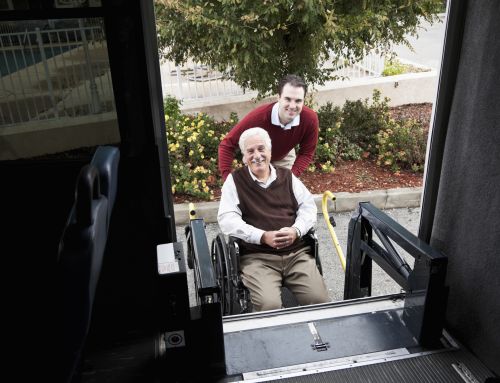A recent proposed rule released by the Centers for Medicare & Medicaid Services (CMS) provided guidance for market stabilization of the Affordable Care Act. Within this proposed rule, network adequacy provisions for dialysis clinics provided a narrow scope for insurers. In comments submitted by DPC on March 6, we argued stronger time and distance criteria need to be added to these provisions.
Research shows there is little difference between living in a metropolitan area compared to living in a rural environment, but there are significant mortality risks associated with actual distance from a dialysis facility. Additionally, after only 15 minutes of travel time, morbidity and mortality rates increased while treatment adherence decreased.
As insurers look to create narrower networks, maintaining loose standards for adequacy will discourage patient enrollment. If a patient is required to drive past a closer facility in order to go to an in-network facility, they will have no choice but to drop or refrain from enrolling in the plan. Weaker standards could be another way for insurers’ to exclude ESRD patients from enrollment.
We hope to see a revised rule with stricter network adequacy requirements and will continue to ensure dialysis patients have adequate access to care.
Read DPC’s complete comment letter below:
Hon. Patrick Conway, Acting Administrator
Centers for Medicare & Medicaid Services
7500 Security Boulevard, Baltimore, MD 21244-1850
Re: Notice of Proposed Rule-Making for the Patient Protection and Affordable Care Act; Market Stabilization, CMS-9929-P
Dear Acting Administrator Conway:
As America’s largest patient-led organization representing 29,000 dialysis patients and family members, Dialysis Patient Citizens (DPC) strives to improve the quality of life for all dialysis patients through education and advocacy. Thank you for the opportunity to comment on the above-referenced NPRM as it pertains to people who will need coverage for end-stage renal disease through an exchange plan. Our comments specifically address the Network Adequacy provision.
With regard to network adequacy provisions for dialysis clinics, it is our preference that strict time and distance criteria be applied. In-center hemodialysis patients travel for treatment at least three times a week. Patients are often elderly, suffer from multiple chronic conditions and live on a fixed income. Simple human behavior dictates that each additional barrier such as minutes spent in a car or bus, extra transfer on a subway line or dollar spent at the gas pump increases the probability of non-adherence, which potentially leads to costly hospitalization and death.
To further illustrate the impact of travel time on patients: research from Thompson et al. in the August 2012 issue of Kidney International indicated there is little difference between living in a metropolitan area compared to living in a rural environment, but there are significant mortality risks associated with actual distance from a clinic.i Another research team found that even after only 15 minutes of travel time, morbidity and mortality rates increased and health-related quality of life and treatment adherence decreased.ii This trend continued as travel time increased.
According to the Federal Trade Commission, “Dialysis services are provided in local geographic markets limited by the distance ESRD patients are able to travel to receive treatments. ESRD patients are often very ill and suffer from multiple health problems, making travel further than 30 miles or 30 minutes very difficult. As a result, competition among dialysis clinics occurs at a local level, corresponding to metropolitan areas or subsets thereof. The exact contours of each market vary depending on traffic patterns, local geography, and the patients’ proximity to the nearest center.”
This rulemaking comes at a time when insurers and dialysis clinics are at loggerheads over reimbursement issues. Given the trend toward narrower networks, we expect insurers could consider contracting with a single dialysis provider organization. We realize that insurers will want to take quality metrics and prices into account in assembling a provider network. Exclusivity based on quality and efficiency can make sense within a “market” as defined by the FTC, but in areas of lower population density, any potential benefit of exclusive contracting can be outweighed by the burdens of traveling to and from a distant facility. If standards are loose, and a patient is required to drive past a nearby facility to go to an in-network facility, the patient really will have no choice but to drop or refrain from enrolling in the plan. By limiting enrollees to inconveniently located facilities, plans could discourage enrollment of ESRD patients.
Sicker patients have been confronted recently by a raft of insurer actions that utilize purportedly benign rationales as pretexts to exclude them, such as restrictive formularies and declining to pay broker commissions on higher metal-level policies. For kidney patients, the pretexts have included their potential Medicare eligibility and their reliance on charities for premium assistance. We fear that weaker network adequacy standards could be yet another basis for insurers’ exclusionary tactics.
In general, stronger network adequacy requirements give bargaining leverage to providers, and weaker standards give leverage to insurers. When thinking of policy measures that might help stabilize the individual market, adjusting this balance to favor insurers would not be top-of-mind to most health policy analysts. There is a good argument to be made that state regulators can better assess matters such as time and distance requirements than can federal officials who are not on the ground; however, inclusion of this provision in a market stabilization package signals to insurers that a less robust provider network is an acceptable, or even approved, method of lowering costs. We would prefer to see provisions of this type promulgated in a more neutral context, one that emphasizes federalism considerations over cost considerations.
Thank you for your consideration of our comments and concerns. If you have any questions or would like additional information, please do not hesitate to contact me or our Regulatory Affairs Director Jackson Williams.
Sincerely,
Hrant Jamgochian, J.D., LL.M.
Chief Executive Officer




















